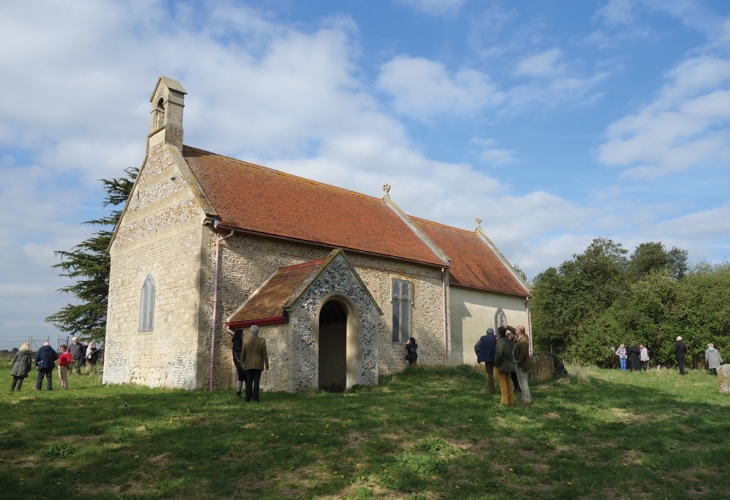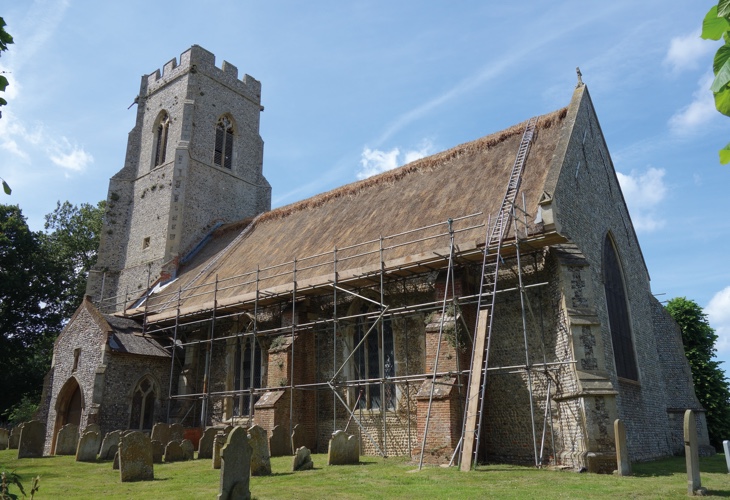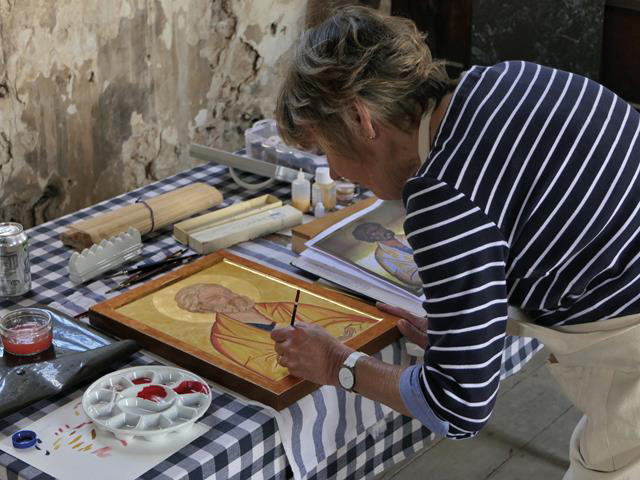Rob Gladstone is a former publishing editor and deputy head living in Stibbard. He says ‘the richness, beauty and sheer volume of Norfolk’s mediaeval churches has seeped their way into my life over the twenty-five years or so I have lived in the county. From the occasional visit as a schoolteacher, remiss parishioner and (very) amateur historian, visiting these wonderful buildings has morphed into something of an obsession. I have been a member of the Norfolk Churches Trust for several years and I am a great admirer of the selfless work so many people do to keep these historical masterpieces intact. With their agreement, I am going to start a monthly blog to record my sojourn around the churches of the county recording their beauty and meaning and the tales they tell. This is a personal journey, or ‘church crawl’, not an academic treatise, but I hope to entertain and inspire you to support the trust and visit these extraordinary places steeped in the history of this unique county.’
Walking up the small path towards St Faith’s in Little Witchingham, through the cow’s parsley and wildflowers that carpet the graveyard, I once again feel the anticipation growing. I take a second to wonder where has this obsession come from? Why do Ifeel the need to explore every church I see? Why am I spending so much time visiting, researching, photographing these ancient buildings, so many of them semi-redundant and seemingly abandoned by the people they were established for? I love history, spending much of my adult life teaching it, but I’m not particularly religious. I concur with the words of Andrew Ziminski in the wonderful Church Going – A Stonemason’s Guide, ‘some people go to church, I go to churches.’I struggle to distinguish between Early English and Perpendicular or remember what on earth an ogee arch is. So why the obsession?
Sir John Betjeman, Poet Laureate (1972-1984), had this simple answer. Churches are the museums of Britain. Within their walls and churchyards are our collective history for over a thousand years. A portal to the past on a minute, personal scale but also painting monumental events on a huge sweeping historical canvas. Just imagine a village without a church. There would be something crucial missing, like a body without a soul. A church is a visual anchor for an entire community. It tells a million stories of love, birth and death of war and famine, of cruelty and hardship, of dedication, skill, and beauty.
This is my seventh church of the day, previously visiting St Peter’s Ringland, All Saints’ Weston Longville, St Andrew’s Attlebridge, St John the Baptist Alderford, St Margaret’s Swannington and The Assumption Great Witchingham. Each of these mediaeval churches has something unique to marvel at, from St Peter’s extraordinary 15th Century hammerbeam roof with beautiful wooden vaulting to the richly coloured seven sacrament font in Great Witchingham.
St Faith’s seems even more remote than any of the others, the small lane sunken over time, the church sits comfortably in its bucolic churchyard, the gravestones poking up like old molars. The southern door is simple and porchless, no indication of what lies inside. As I open the door, I am struck first by the intensity of the whitewash, then instantly by splashes of deep red ochre paint on the northern wall. Scanning around I was astonished by the scale and beauty of the medieval wall paintings, set off wonderfully by the bareness of the space and the whitewashed rustic roof. The feeling of wonder and spirituality is palpable, and you can’t help but feel somehow connected to the artist and parishioners of the 14th Century.
One of the difficulties about church crawling, along with finding the time and hoping for an unlocked door, is trying to find exact information about each church. There are many wonderful books and websites to peruse but there are nearly always grey areas around dates and timelines. The consensus seems to be that St Faith’s was built around the first half of the 14th Century with improvements on and off until the 19th Century. But there again, looking at the Norfolk Historic Environment Record the north wall is Saxo-Norman, so who to believe! And does it matter anyway? Surely the beauty is that all the academics have their own theory, and this makes it more engaging to the lay person like me.

The story behind the discovery of the wall paintings is a tale of one person’s passion and curiosity. In 1967 Eve Baker, a local art historian visited the church. It was roofless, abandoned, and full of ivy. She climbed through one of the empty windows and pulled away some of the ivy. The whitewash came off too and there underneath was a glimpse of this astounding wall painting, surely every church crawler’s dream! With the assistance of the Norfolk Churches Trust, and now under the remit of the Churches Conservation Trust, much of the wall painting has been revealed, for a full guide see the link here .

Every church you go into throws up intriguing questions and links to the history of the local community and further afield. Here I ask myself why are there no windows in the north wall of the nave and no paintings on the south wall? Is it because the Black Death intervened, that cataclysmic plague that killed more than a third of the population and brought medieval life to a grinding halt. Eve Baker is of the opinion that the south wall had been prepared for painting, but this work was never started due to the lack of skilled artisans. On the exterior south wall of the chancel is a portion of a medieval preaching cross showing the crucifixion of Christ, but why is it there and from where does it come?
The more churches I visit the more I realise that many of the fixtures and fittings of a church had their origins elsewhere. A good example being the east window in Hingham made up of stunning early 16th Century stained glass from Germany. In St Faith’s there is a Victorian font from nearby Whitwell, the stem of the original font still sitting in the south arcade. Is this piece of medieval masonry now adorning another church or is it a floral feature in a nearby garden as was the font from St Mary’s, Houghton-on-the-Hill? There is an altar from West Runton, and the medieval altar slab spent many years in the shrine church in Little Walsingham. St Faith’s Renaissance-era pulpit is currently located in St Faith’s, Lenwade, a mission church that like so many has fallen on hard times and closure.
As I stick to ancient superstition and roam clockwise around the exterior of the church, the feeling of peace and solitude is all encompassing. I contemplate the people long gone, whose every stage of life would have been borne out around these walls. Baptisms and marriages, burials, and business deals. I think about the other churches visited that day, the hundreds of stories connected to these simple, elegant buildings, the thousands of people laid to rest in ‘God’s acre,’ sleeping until the call of the Day of Judgement. I’m very much not alone – this is a place echoing with collective memories, full of the rich history of this medieval county.
To bring everything jolting back to the future, I’m reminded of a recent TikTok trend that received millions of posts. This asked men the simple question, ‘How often do you think about the Roman Empire?.’ The answers became an international news phenomenon and the cause of much mirth and comment on the psychology of the male gender. An inordinate number of wannabe cives Romani claimed to think of the classical world at least once a week or even once a day! The more appropriate question for me is, ‘How often do you think about medieval churches,’ the answer – more often than can possibly be good for me!
Our thanks to Rob for our first blog post, we are looking forward to the next one.







